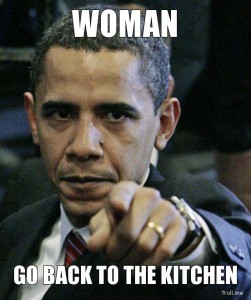Muted Group Theory
Created by Cheris Kramarae, the muted group theory states that language is “literally a man-made construction.” According to Kramarae, a muted group is a group of people who belong to low-power groups who must change their language when communicating publicly, thus, their ideas are often overlooked. A recurring example of a muted group used by Kramarae is women. According to her and other feminist theorists, women’s words are discounted in our society and their thoughts are devalued. This is apparent everyday in the daily life of some. As I scroll through the feeds on social networks, there are examples of women’s opinions not even being took into consideration by some men in conversation.







